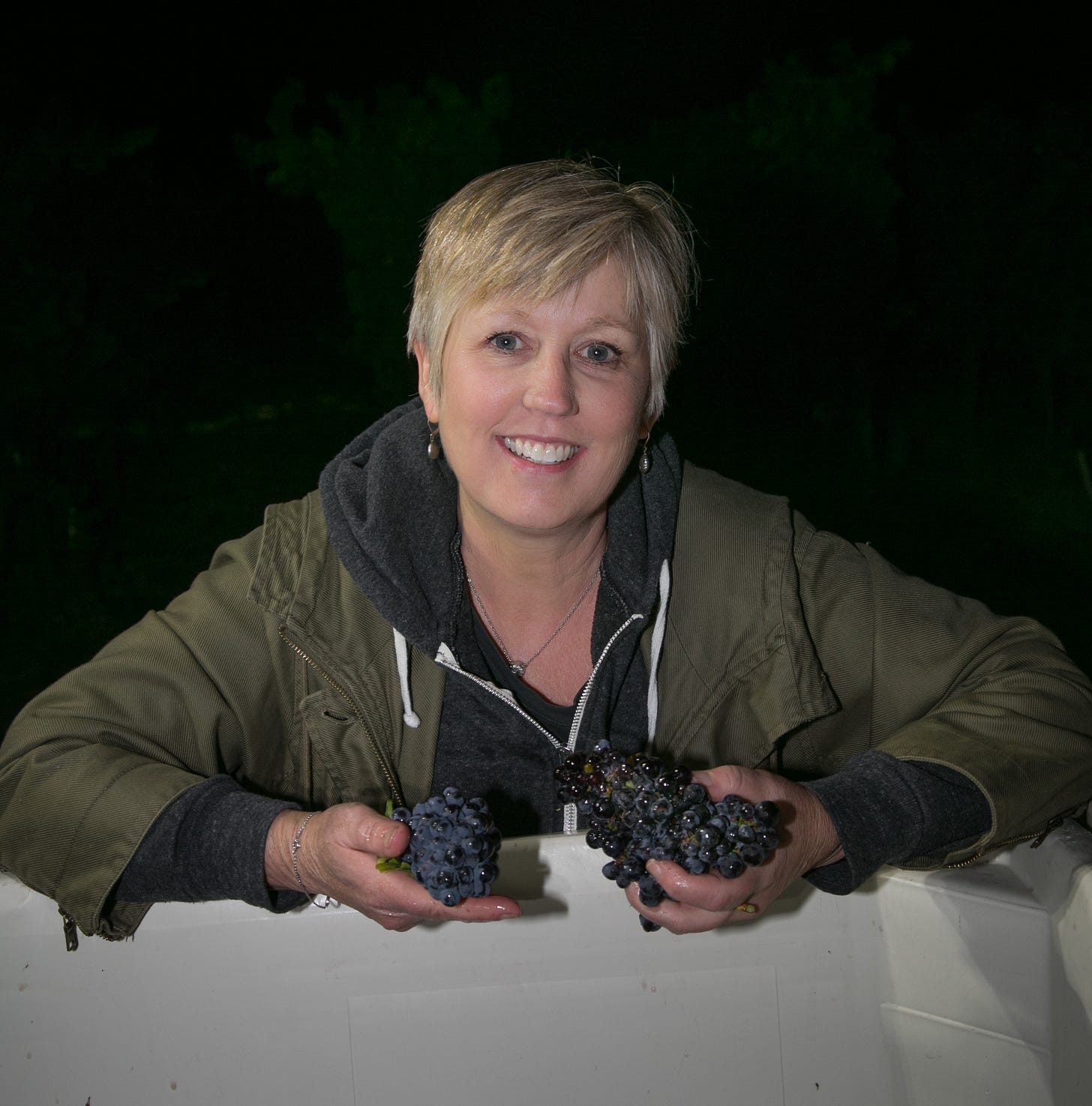The Two-Taco Solution
It takes a rumbly tumbly to make a stunning rosé
In “Extremely Pale Rosé” (2007), Jamie Ivey wrote of his quest to find the palest pink wine possible. Ivey was, of course, writing about Provence and the delicate style of its signature wine. His entertaining romp through southern France captured a consumer perception that lack of pigment signals quality in a pink. The key decision of a winemaker was not just when to harvest, but how much (or little) time to leave the juice on the skins to impart the precise amount of color.
For Kathleen Inman, the decision of when to press the juice off the skins is not difficult. She follows the two-taco rule.
“The amount of time this wine spends on the skins is always the time it takes me to go to the taqueria, have two tacos, return and start the press, so it’s the two-taco method, very scientific,” Inman said in a recent video chat with wine writers about her recent spring releases.
“One year I had a burrito, and there was just a little too much tannin in that vintage, so I stick to the two tacos,” she added.
Whatever — it works: The Inman Family Wines Endless Crush Rosé of Pinot Noir is consistently my favorite rosé made in the United States, as I’ve written before. And that’s saying a lot, since there are so many good ones produced in this country these days. More wineries are offering what I call “intentional” rosés, meaning the wines are picked with rosé in mind, rather than a “saignée” of juice bled off a fermenting red wine. With Endless Crush, Inman achieves perfect balance of fruit and acidity, with just enough heft for the wine to pair with a wide variety of foods. That is, if you can stop yourself from drinking the bottle down before dinner.
Endless Crush actually began as an accidental rosé.
Harvest came early to the Russian River Valley in 2004, and as Inman prepared to leave her house before dawn to begin the first day of picking, her husband, Simon, surprised her with a gift for their 20th anniversary. Having forgotten the occasion in the rush of harvest prep, she had to improvise.
“I’m making you a special wine - a rosé!” she said. Later that day, as she learned on the fly how to make a rosé, Simon brought her two tacos, which she scarfed before pressing the juice off the skins. That little break defines her method to this day.
Inman created her boutique winery in 2000 with the planting of her Olivet Grange Vineyard (at the intersection of Olivet Road and Piner Road in what is now known as the Santa Rosa Plains neighborhood of the Russian River Valley AVA. She put her wines into distribution for several years, but found it difficult for a small-production winery to meet a year-round demand for product, so now she relies on direct-to-consumer sales at the winery and through her website. She farms OGV, as Olivet Grange is noted on her labels, using regenerative practices, including a permanent cover crop and no tilling. When she’s not visiting her grandchildren in Maryland and Britain, she frequently hosts tastings at her modest barn-like winery, making Inman Family Wines one of the few remaining California wineries where you have a good chance of talking to the winemaker when you visit. Look for the sign by the road proclaiming “The winemaker is in!”
In addition to the 2024 Endless Crush Rosé ($40), Inman’s spring releases included a 2023 Pinot Gris ($40) with vibrant orchard fruit flavors and a laser beam of acidity that made me sit up straighter when I tasted it. (Who needs those posture exercises in my Instagram feed when a wine like this is around?) Her third release was a white blend of pinot noir and pinot gris, new to her catalogue, called Whole Buncha Love ($43), (She makes a Whole Buncha Love red as well, blending Pinot Noir and Grenache.)
(Psst, in looking at her website, I see Inman still has some of the 2023 Endless Crush, now discounted at $30. Run, don’t walk to your nearest keyboard and … oh wait a minute, you’re probably reading this on your computer or your phone, so all you have to do is change browser tabs and … D’OH! There you go …)
Rosé is good year-round of course, but this is the season for new releases and maximum enjoyment as the weather warms. Here are some others I’ve enjoyed recently.
Librandi, Segno Librandi 2024, Cirò DOC, Italy. $15 If you’re keeping track of grape varieties you’ve tasted, this wine from Calabria in southern Italy is 100-percent Gaglioppo. The Oxford Companion to Wine (aka, The Great Big Wine Book of Everything) says Gaglioppo’s “quite tannic wines can be hauntingly scented, sometimes of roses. DNA profiling has shown it tto be a natural cross of Sangiovese and Mantonico Bianco and therefore a sibling of Nerello Mascalese.” This rosato is energetic with bright cherry and strawberry flavors, and slices through the heat of a sunny afternoon. Taking the juice off the skins avoided the tannin trap. 13%abv.
Dr. Konstantin Frank Dry Rosé of Blaufränkisch 2024, Finger Lakes, $20. Light in color, zippy in acidity and bright with red-fruit flavors, this rosé is ideal for patio sipping on a warm evening. Megan Frank produces several delicious rosés that can span the seasons, including a hearty version from Saperavi that needs the cooler temps and heavier fare of late autumn. 12%.abv.




I love the idea of two-taco timing. I think I'm going to adapt it to my own work: I have to finish my article in the time it takes to drink a bottle of rosé. That should improve the quality of my work significantly.
Love this!